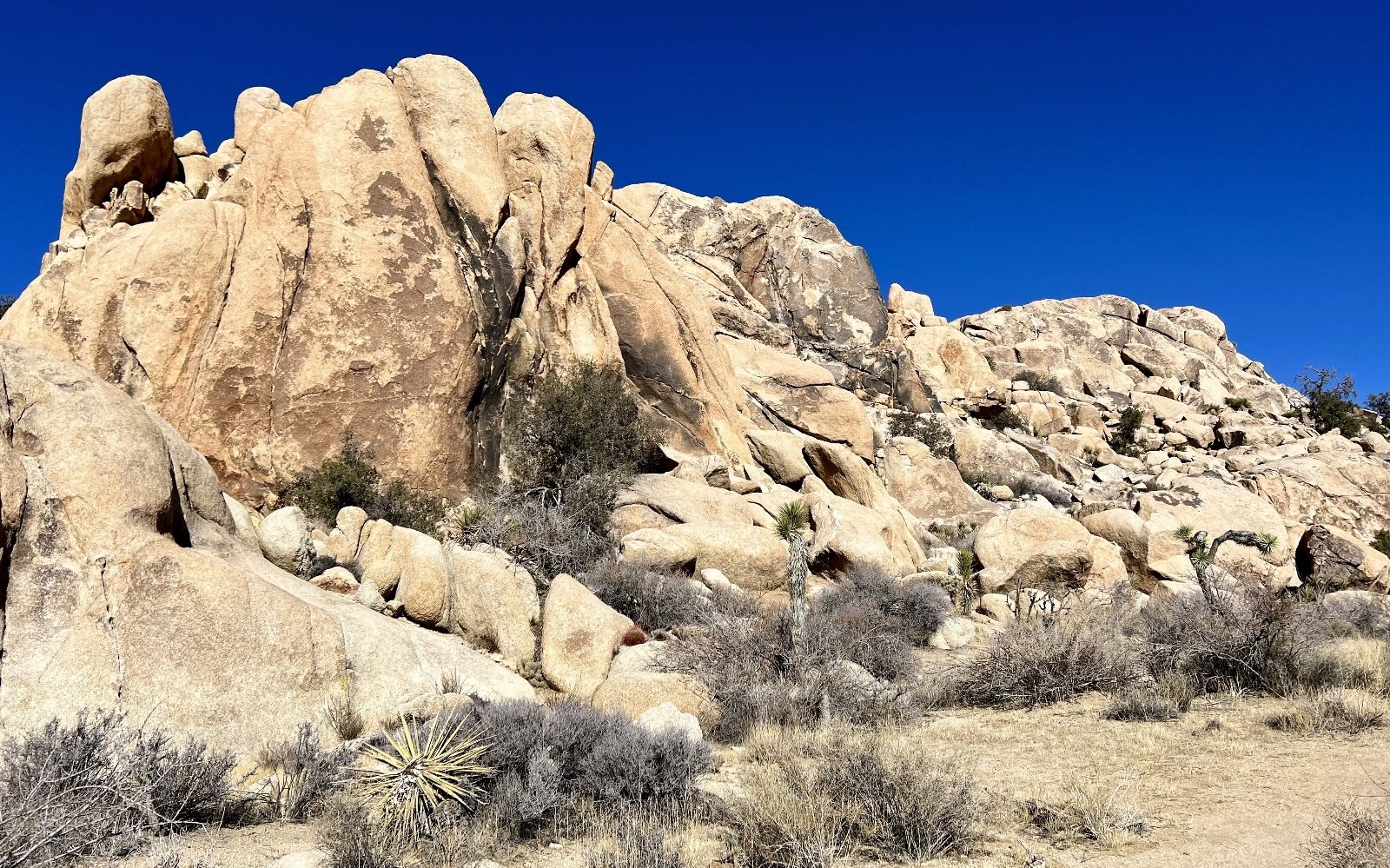December 9, 2022
After beginning our Joshua Tree National Park adventures with the ranger lead tour of Keys Desert Queen Ranch, we were anxious to hike to some of the other historical sites associated with Bill Keys. We took one day to combine the Barker Dam Trail with the Wall Street Mill Trail for a fun route that showcased the park’s iconic monzogranite boulders, namesake Joshua trees, and several historical sites.
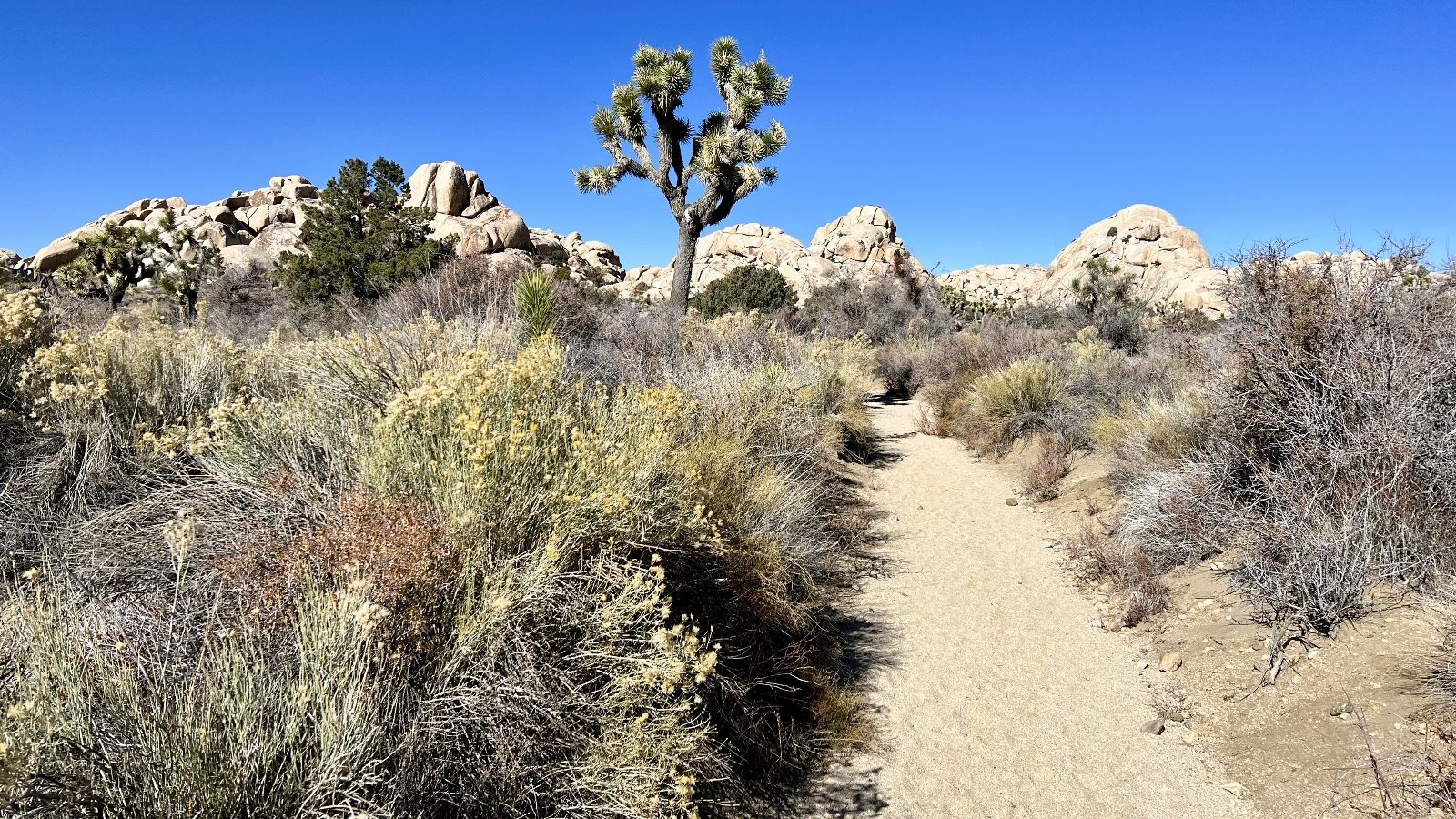
Barker Dam Loop
We chose to begin our hike at the Echo Tee parking area at the intersection of Keys Ranch and Barker Dam roads. We had seen the large and sparsely used parking lot the day prior on our way to the Keys Ranch tour. Starting here would give us more ample space for our beastly truck and it would extend the length of our hike in an area of interesting looking boulders. This was a quiet stretch of trail with no other hikers and just the occasional distant voices of rock climbers.
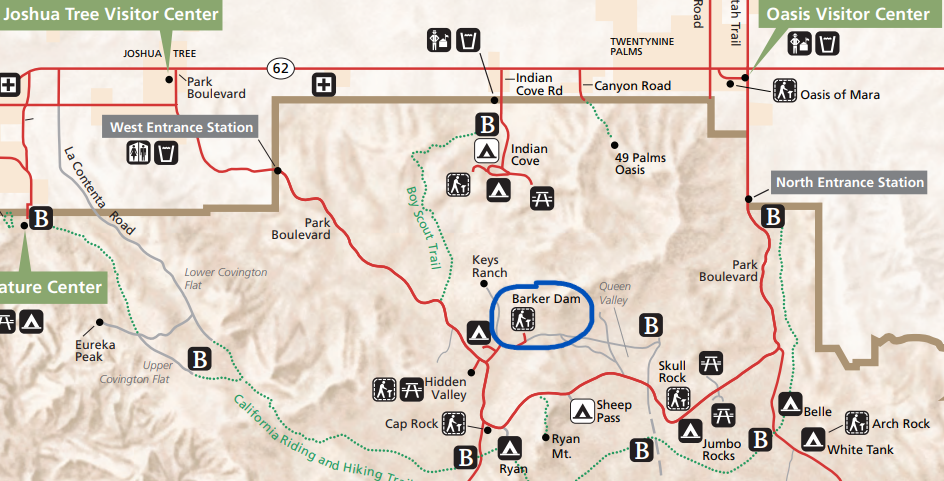
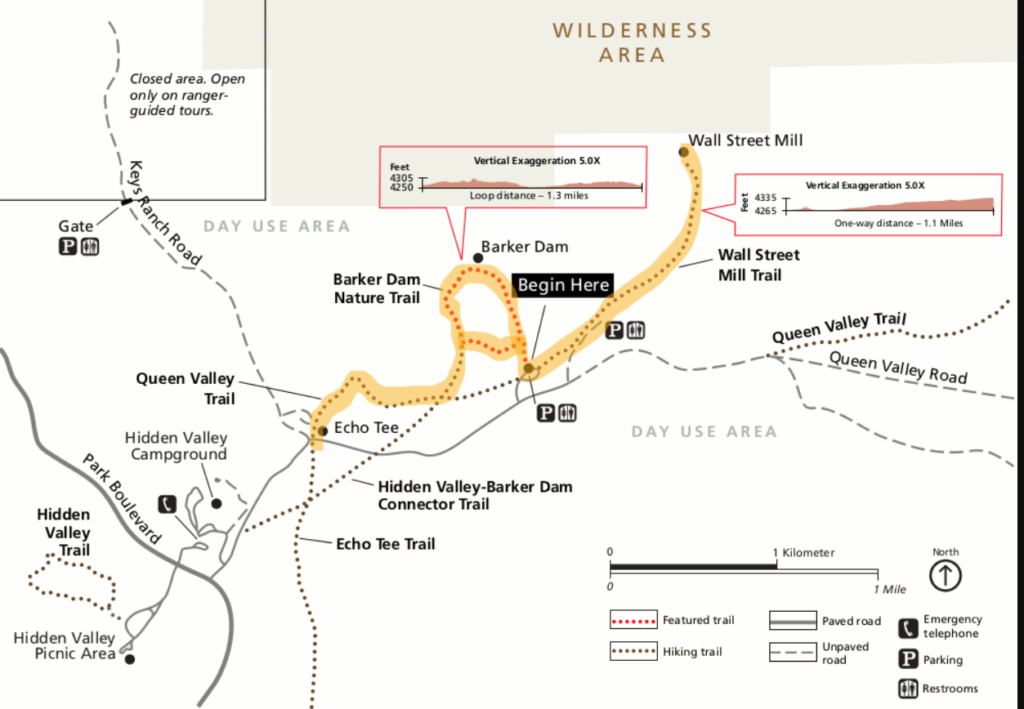
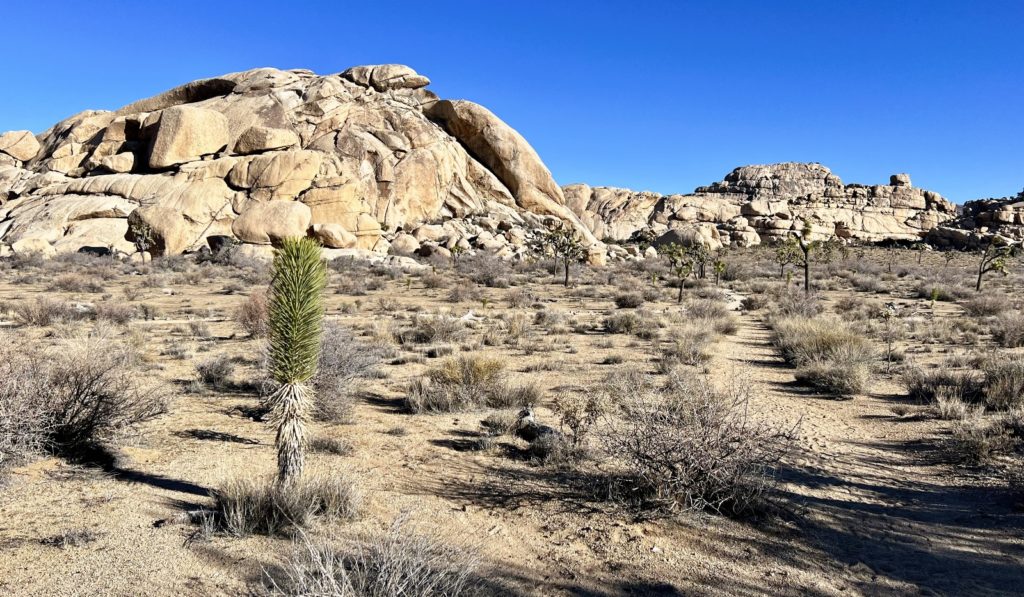
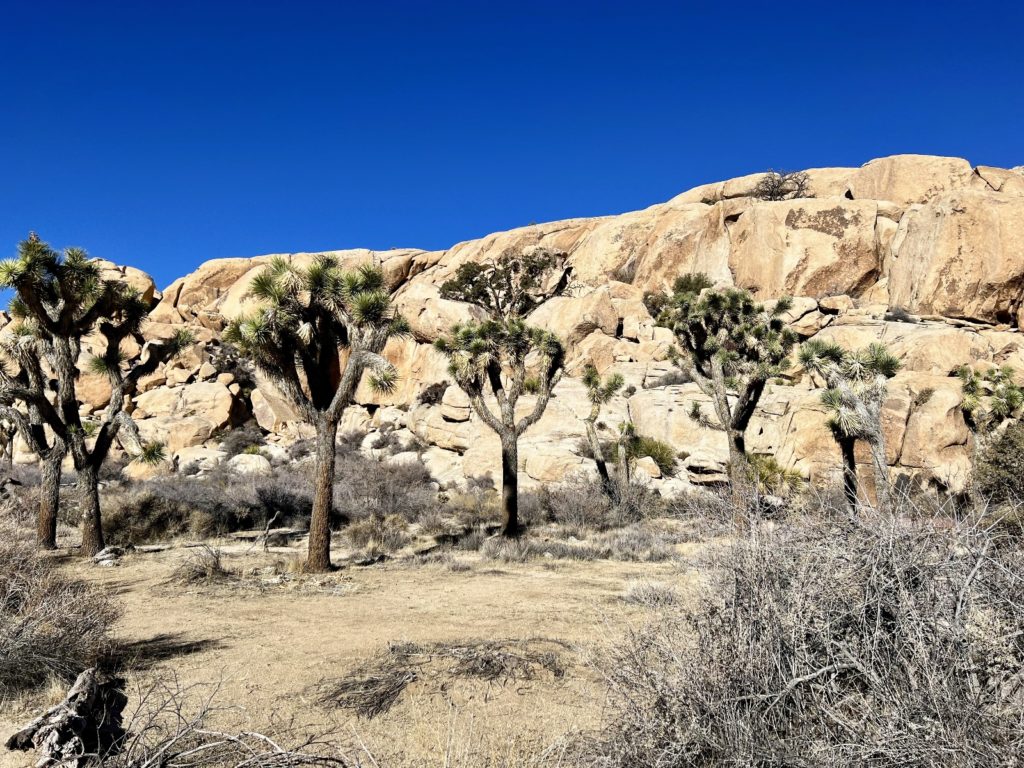
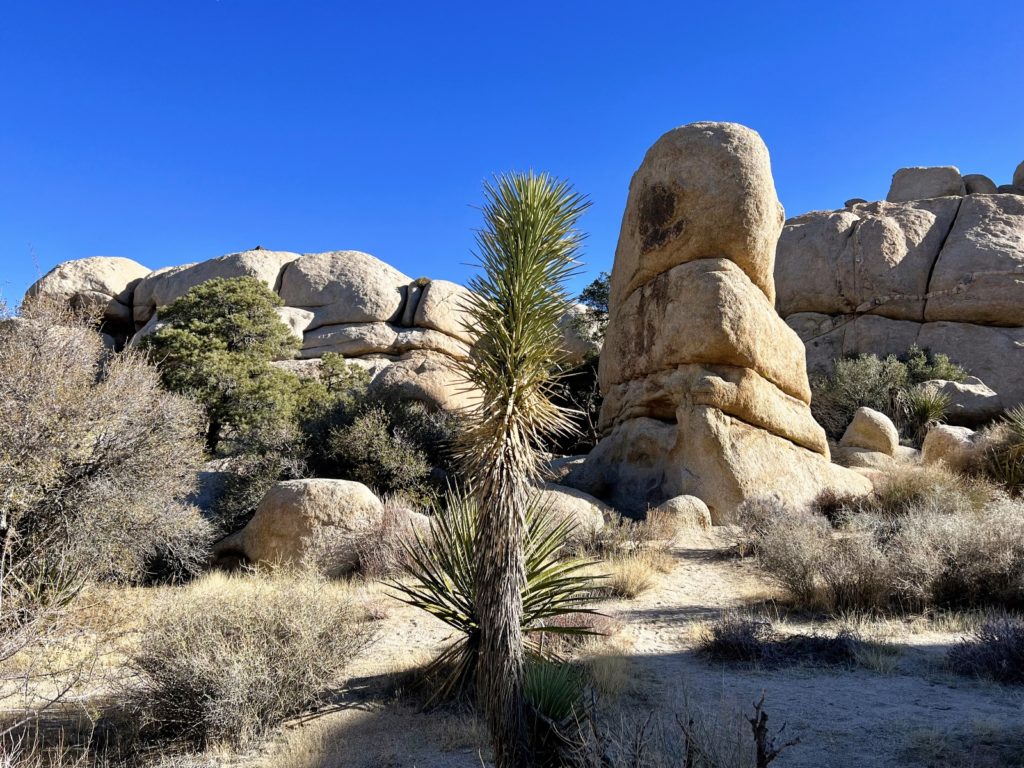
Before long, we joined the Barker Dam Trail. This 1.1 mile loop is one of the busiest trails in Joshua Tree. There was one short climb where we entered the loop, but it was otherwise a flat and easy trail. Our first stop was at some rock art in a shallow alcove next to the trail. From there, it was a lovely stroll through a Joshua tree forest to the dam.
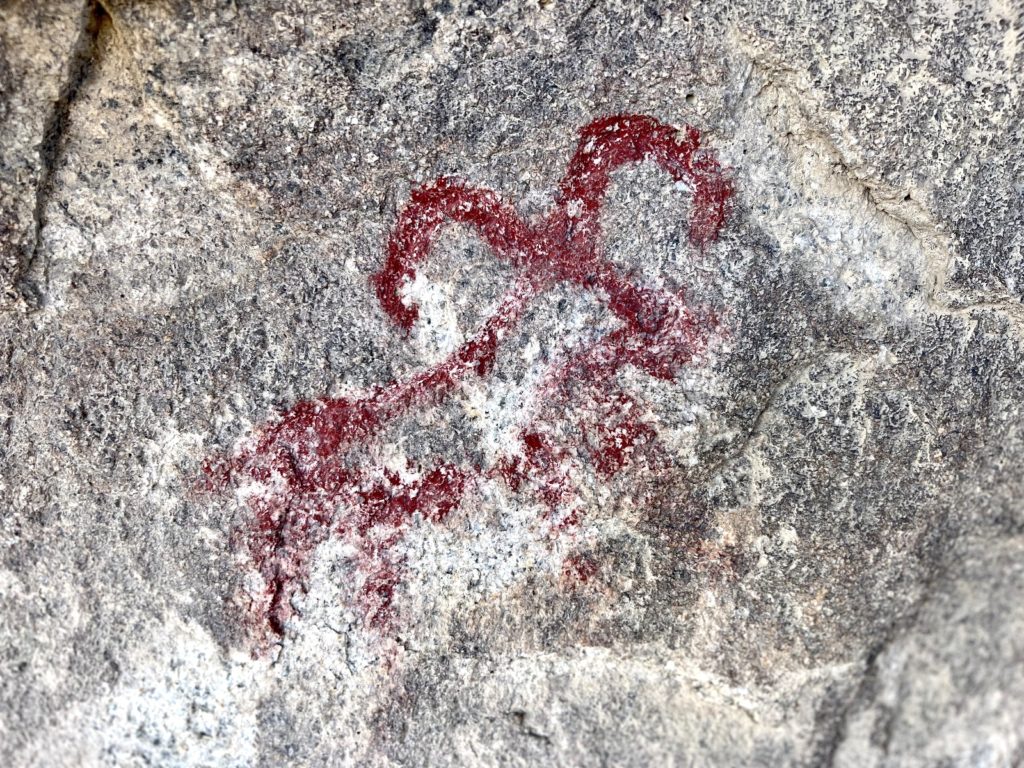
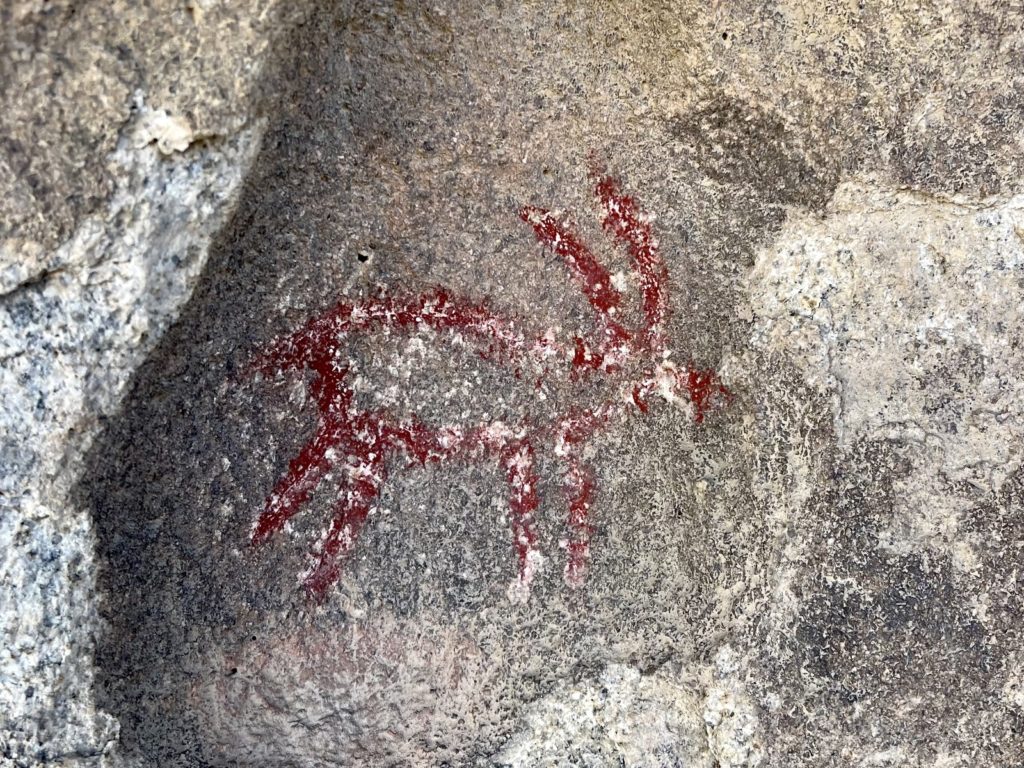
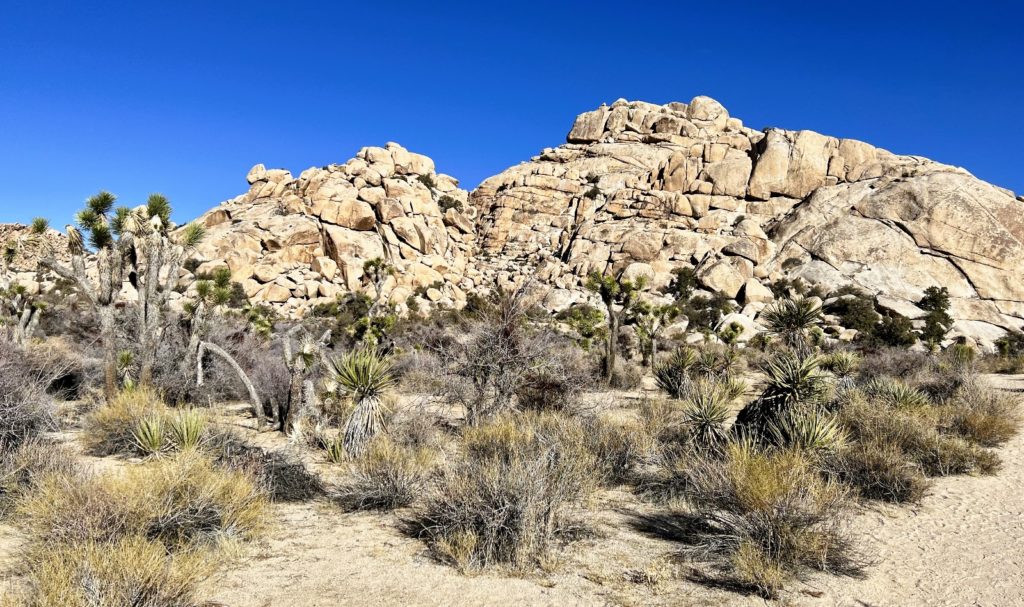
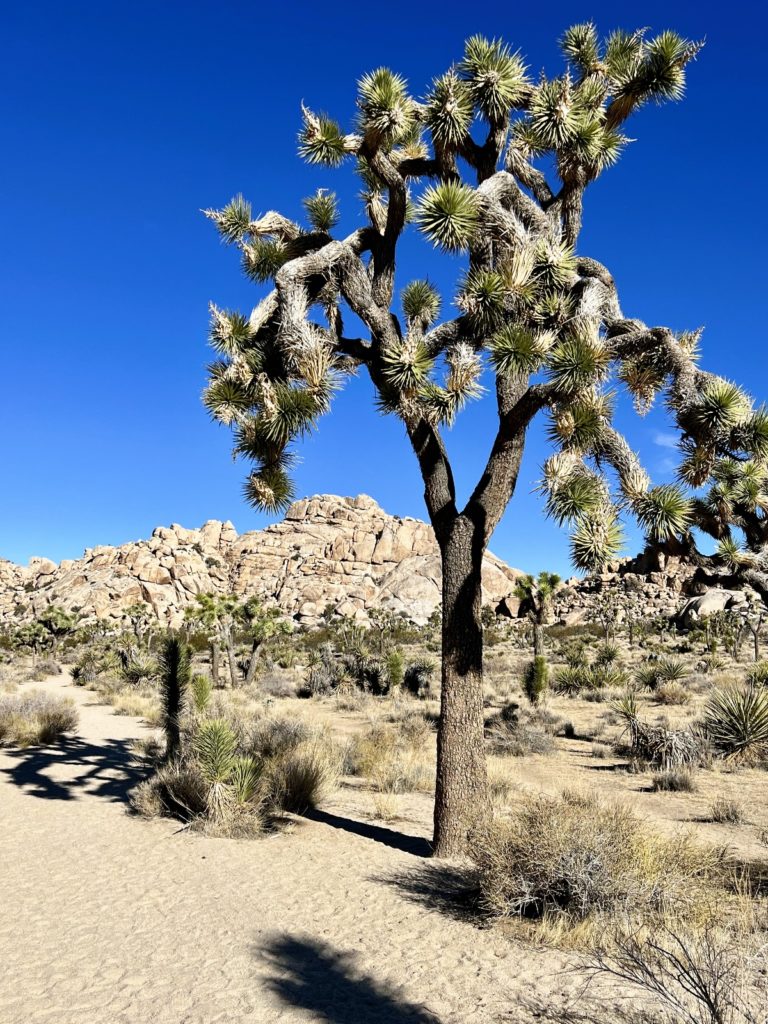
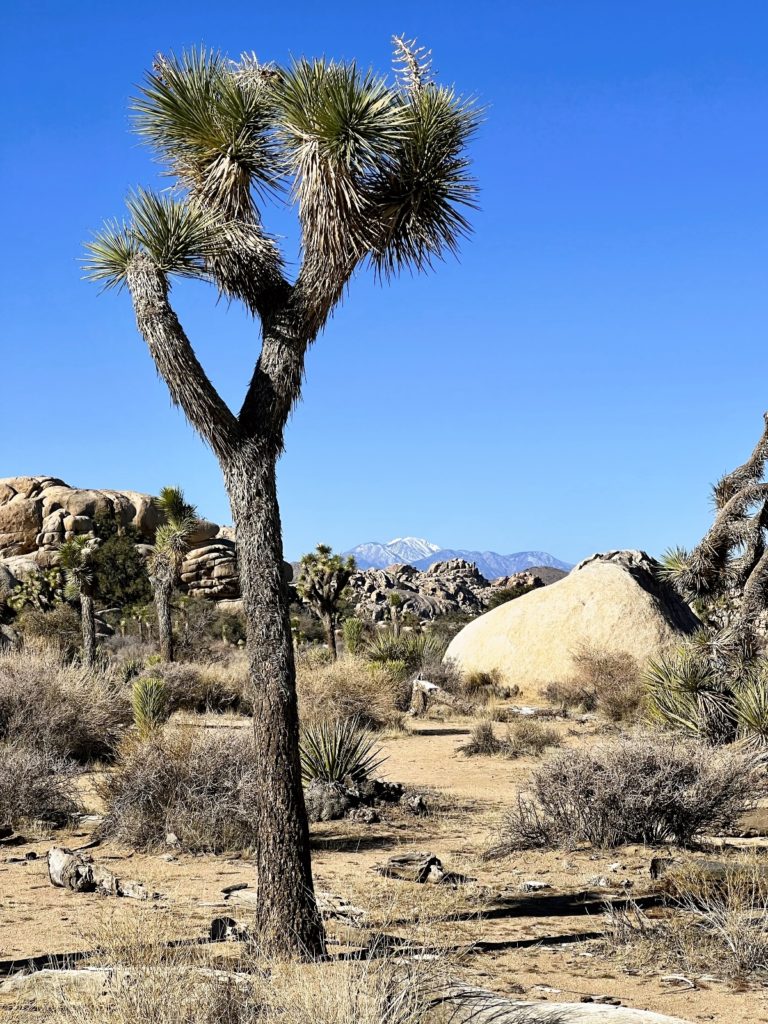
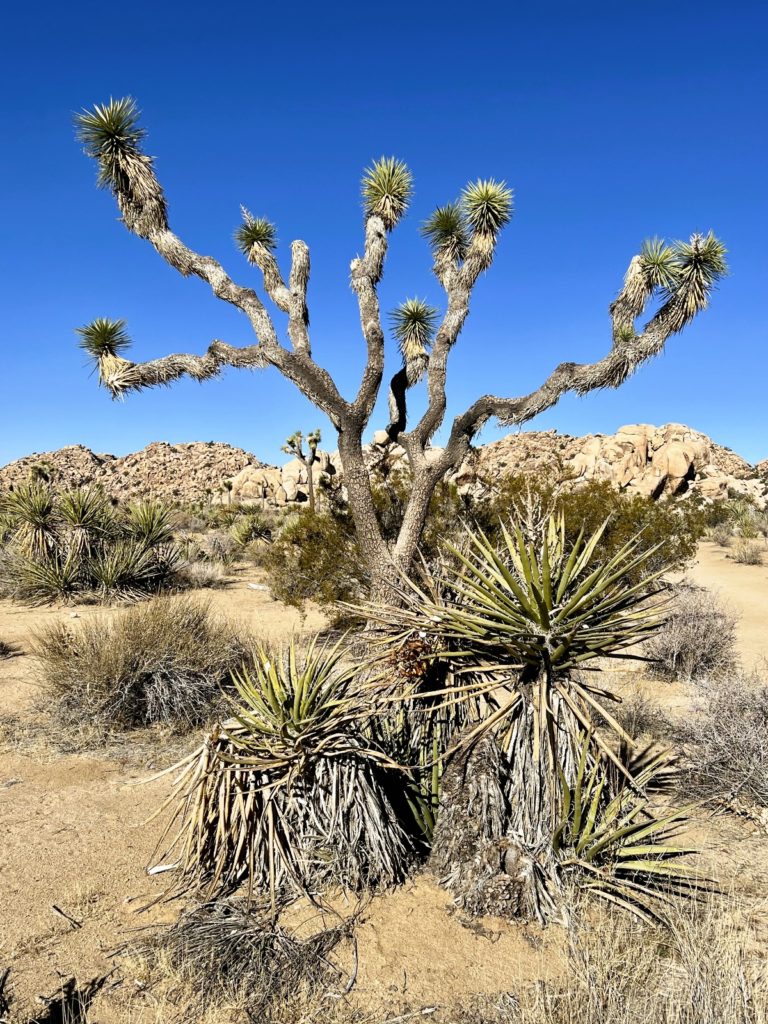
In the early 1900s, ranchers, needing water for their stock, searched for ways to supplement natural water sources. They dug wells, improved springs, and expanded natural catch basins in drainages of canyons and rock formations by building small dams.
This area began as a natural tank, a catch basin for rainfall and runoff. It was expanded into a dam by the Barker & Shay Cattle Company, and still later enlarged by Bill Keys, owner of the Desert Queen Ranch. At its maximum it encompassed about 20 acres. A pipeline once carried water to the cattle trough in the wash behind the dam.
Cattle ranching was a short-lived effort in this area. When the rainfall decreased in the early part of this century, grasses declined and many springs dried up. Cattle raising gradually moved farther west to greener pastures.
Today Barker Dam is a reminder of the past, its waters reflecting only the brown rocks and blue skies of the desert. It is a quiet place in a noisy world and a precious watering hole for desert animals and migrating birds.
—Joshua Tree National Park interpretive sign located at Barker Dam
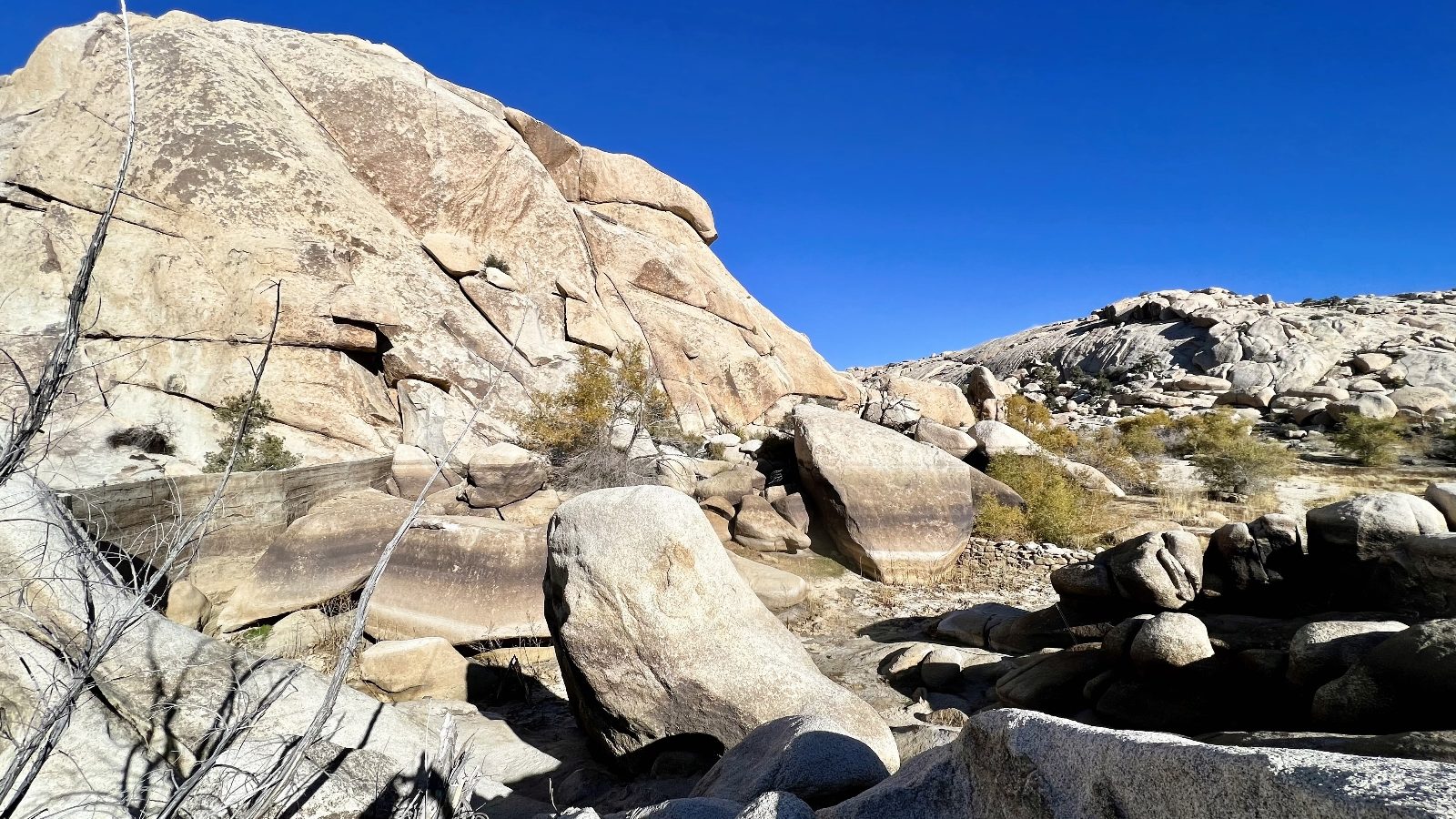
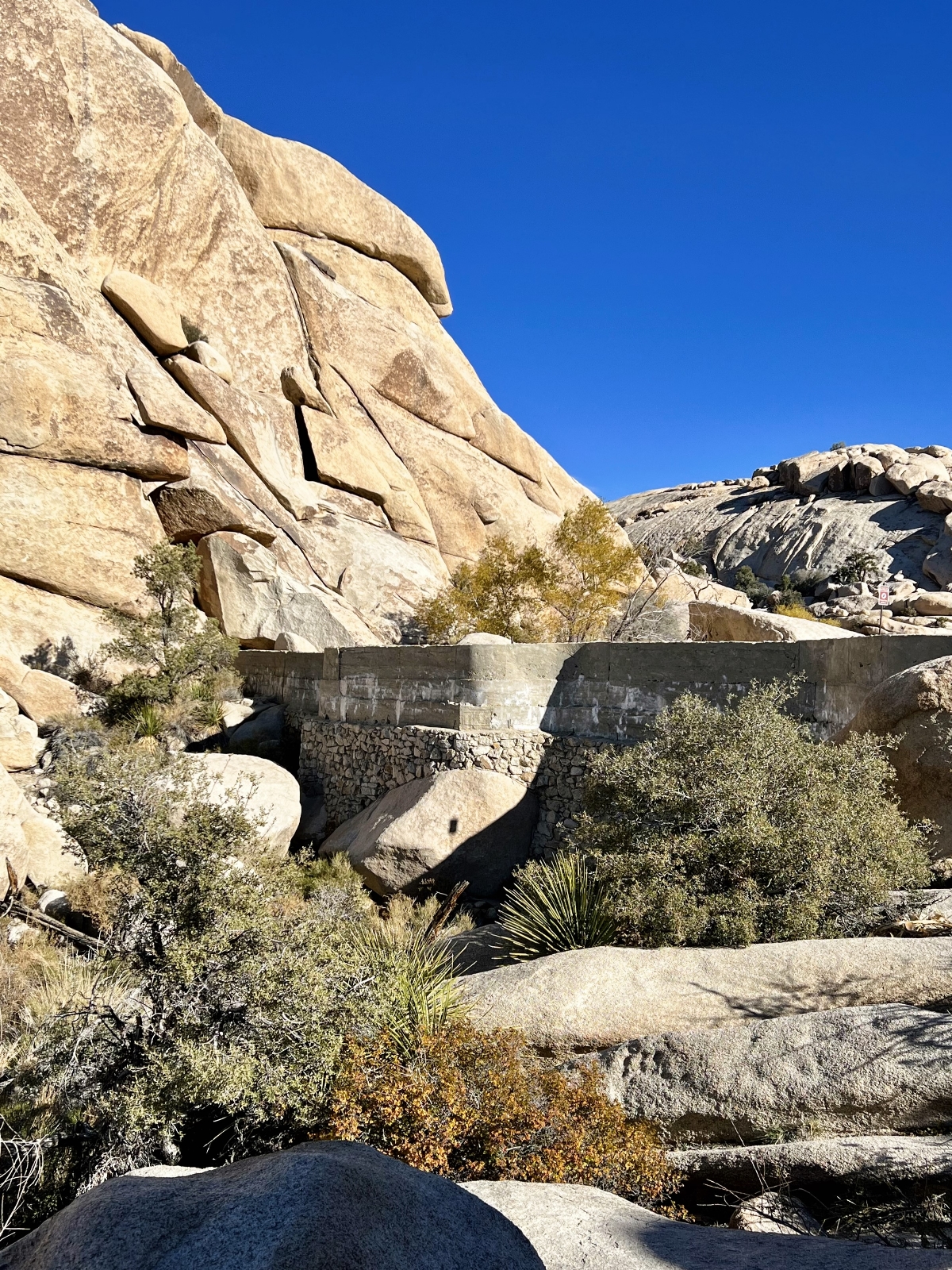
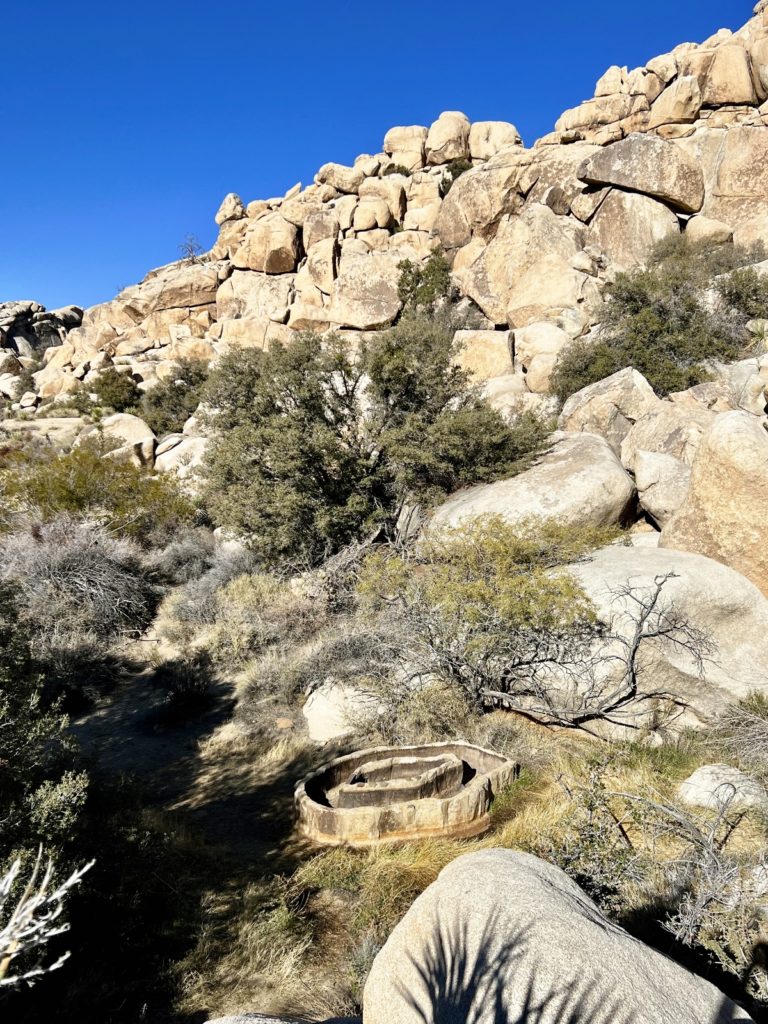
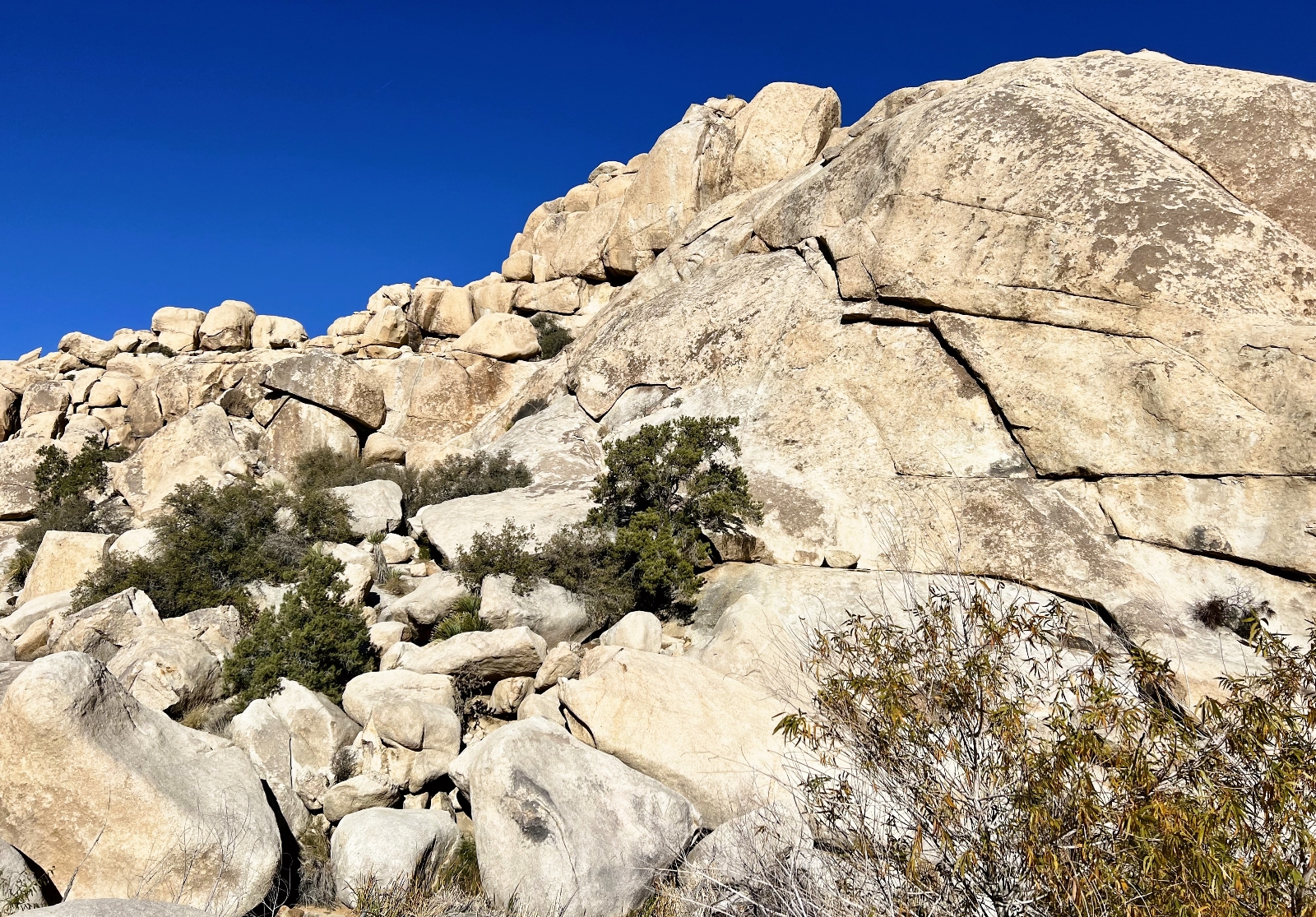
Wall Street Mill
Trail traffic began picking up as we were finishing the Barker Dam portion of our hike. Heading east, we found significantly fewer people on the Wall Street Mill Trail. Joshua Tree National Park is full of old mine and mill sites. We saw a handful of those sites during our visit and Wall Street Mill was easily my favorite. The mill is still in good condition and there were a lot of artifacts strewn about the property making for fun explorations. On our way to the mill, we enjoyed seeing the old Desert Queen Well, a cool rusty car, stone foundations, and the Worth Bagley Stone. This is an easy 2.0 mile out and back trail.

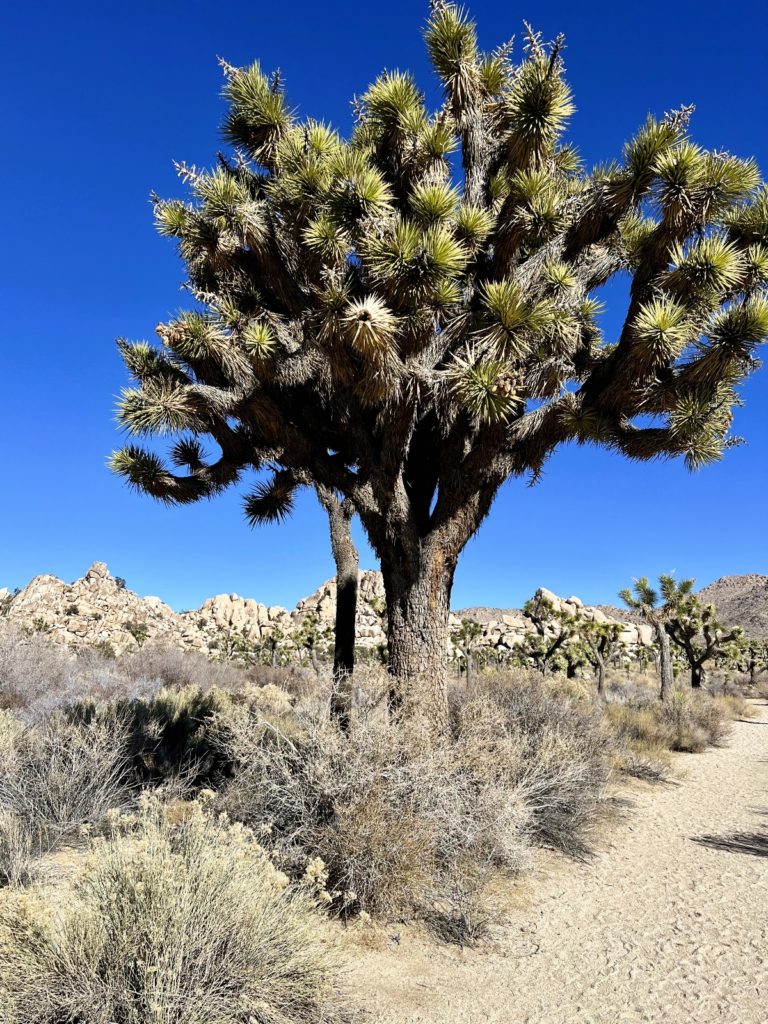
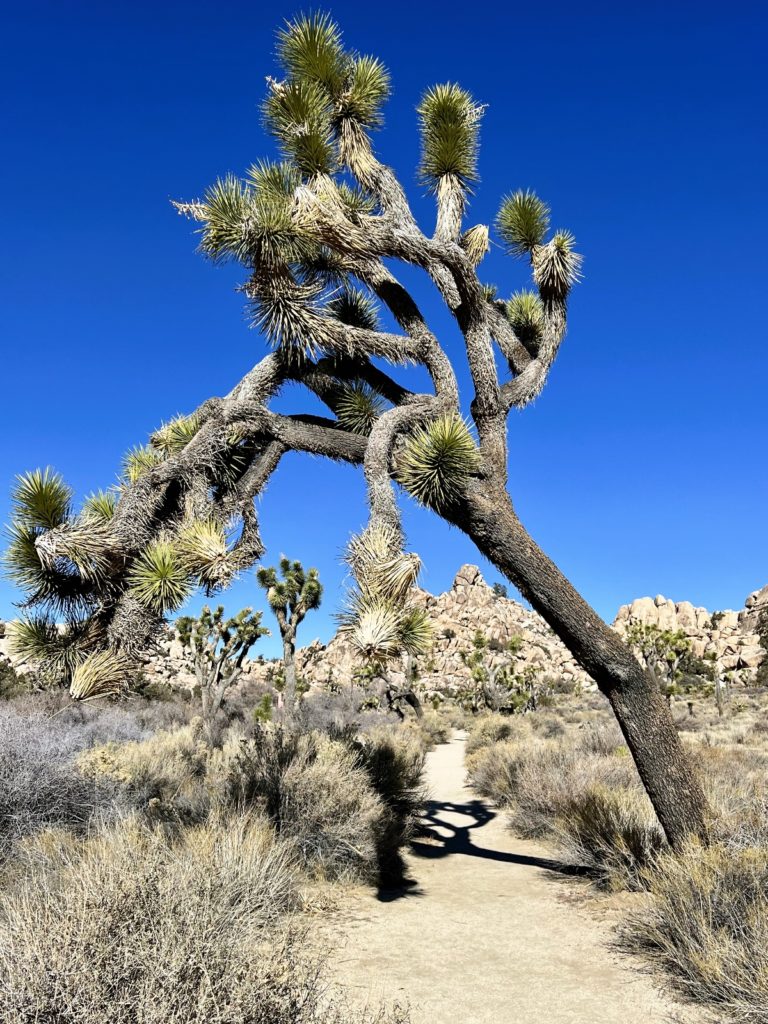
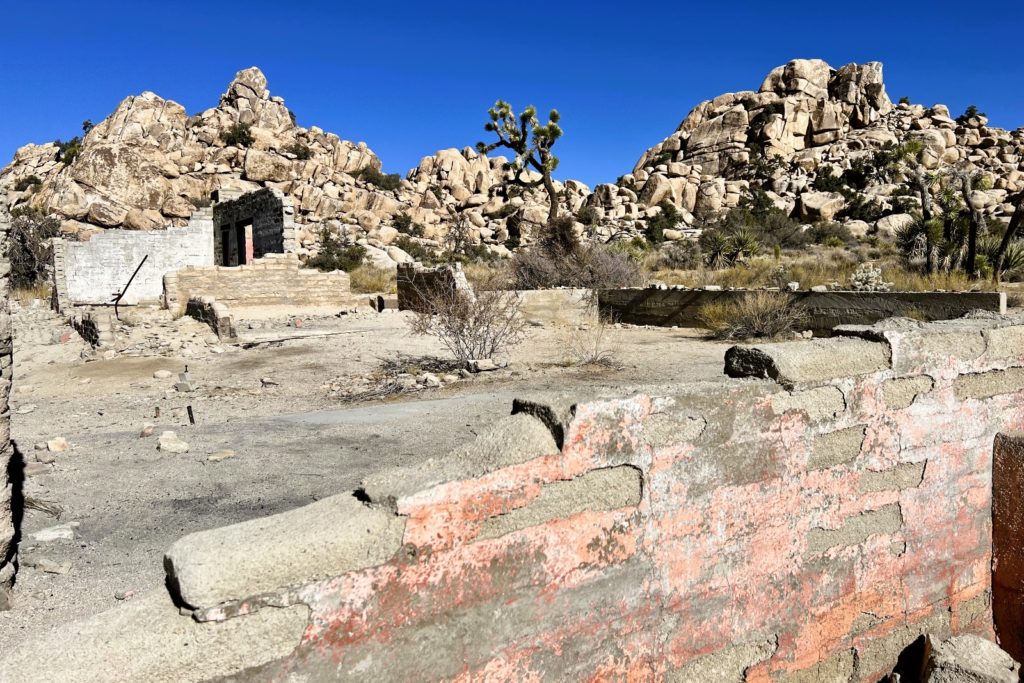
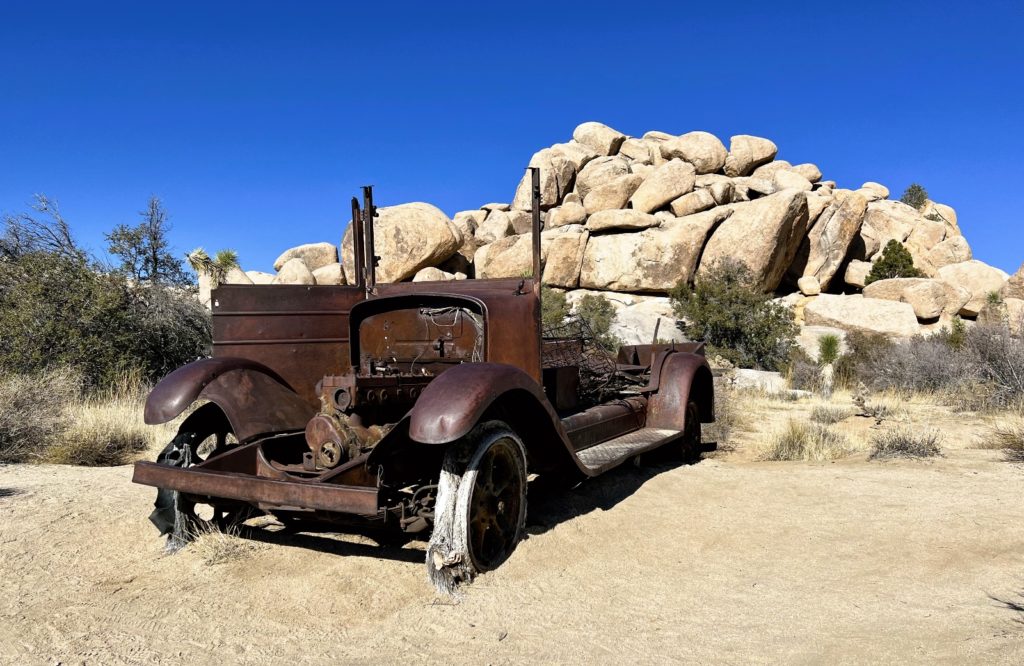
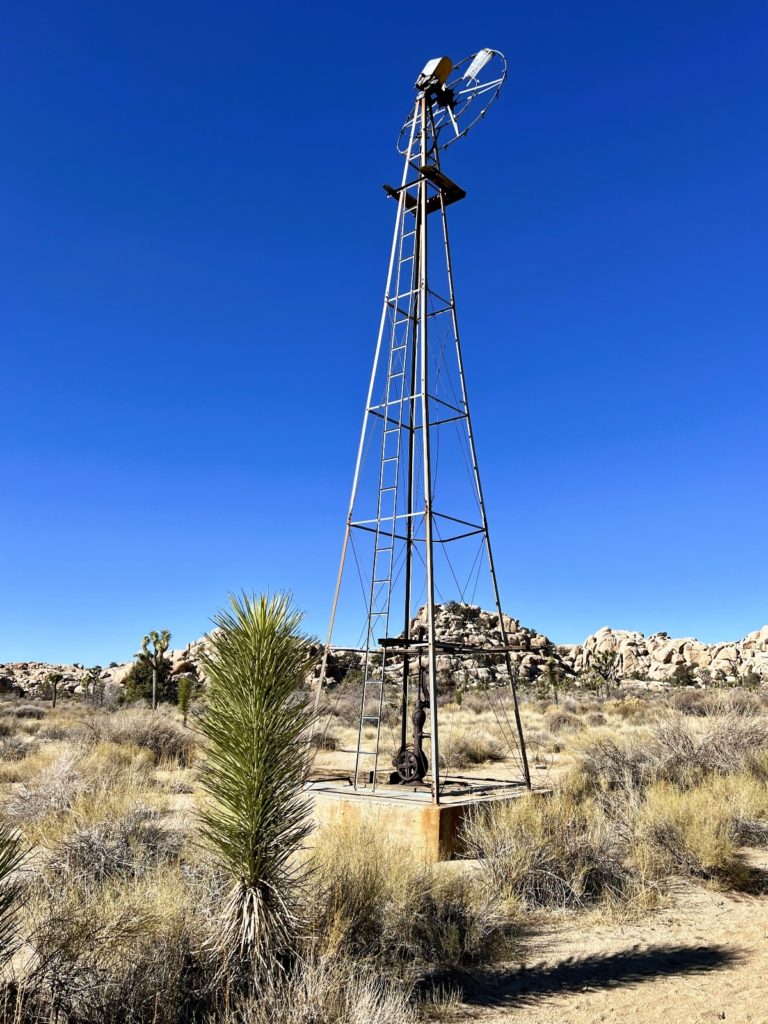
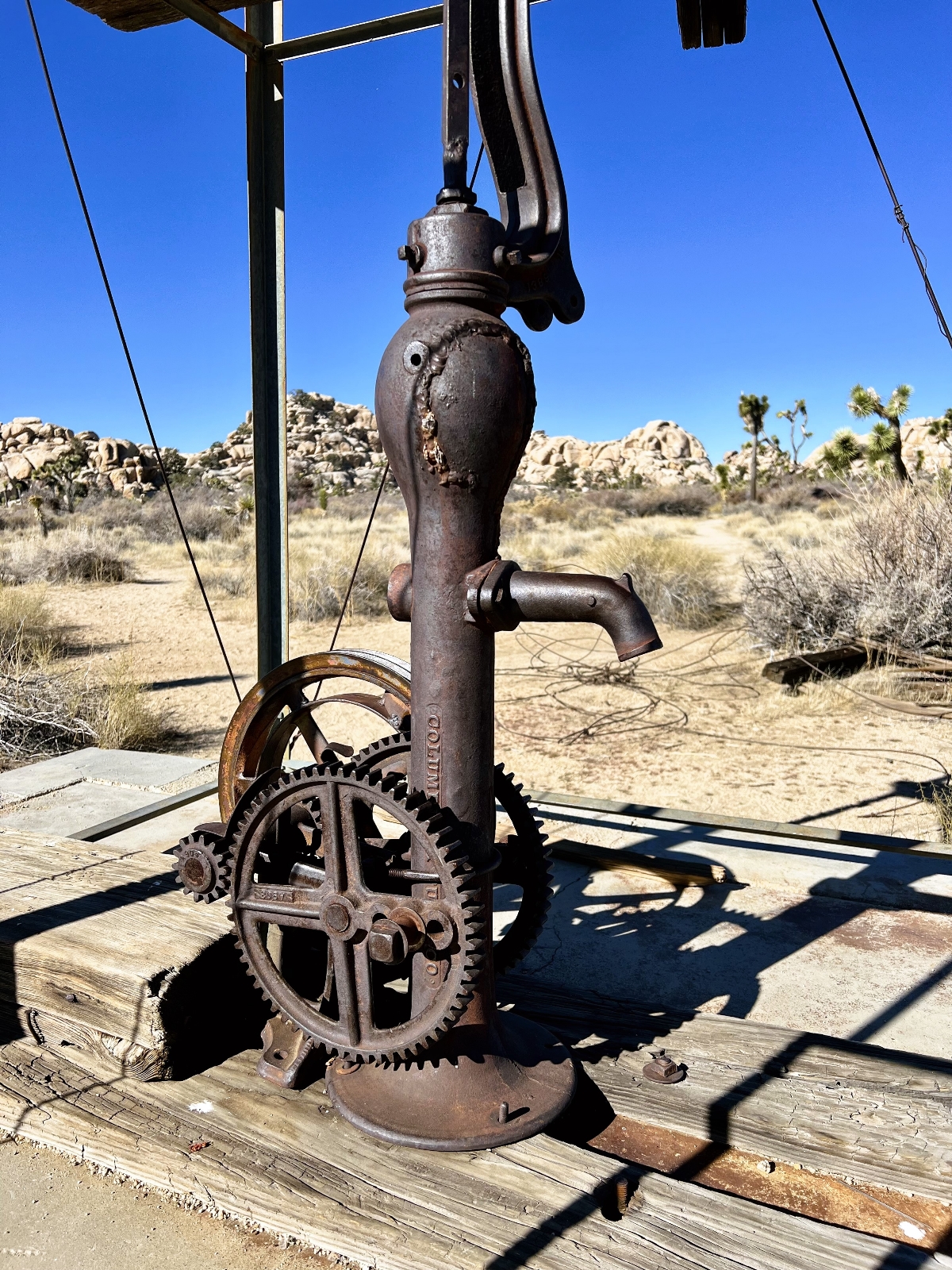
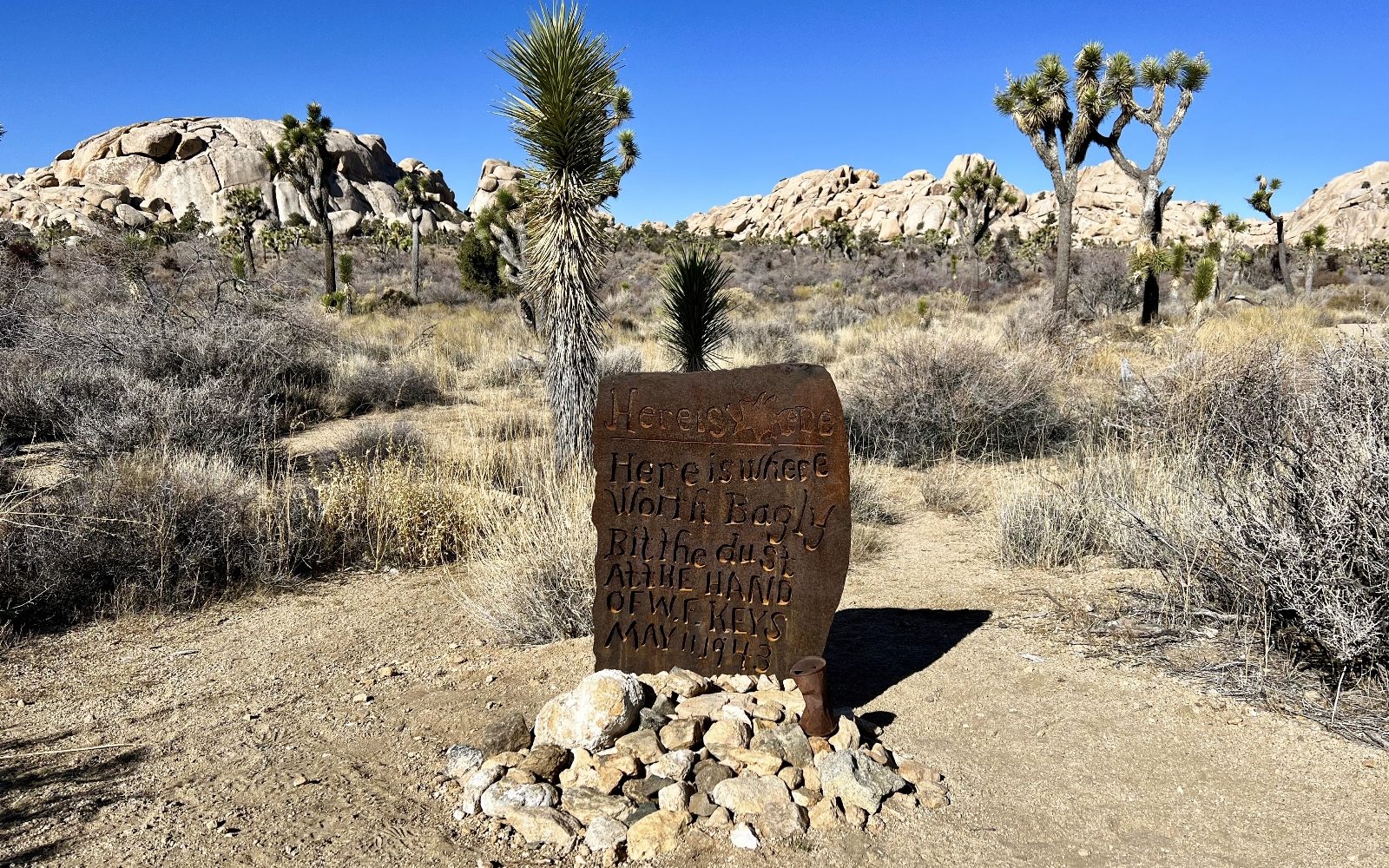
This is a replica of the stone William F. Keys carved and erected to mark the site of a deadly shoot-out. After the May 11, 1943 gunfight, described by Keys as an ambush, Worth Bagley lay dead and the dispute between the two over access to water was ended. Keys was convicted of manslaughter and sentenced to nine years in San Quentin State Prison. After being released in 1948, he returned to his home at the nearby Desert Queen Ranch and erected the marker.
William F. Keys operated the Wall Street Stamp Mill sporadically from 1930-1966, processing gold ore from his mines and mines of others from this region of the desert.
Prior to milling operations, other activities took place in the area. Native Americans used the natural food sources and rock shelters in the vicinity. In the late 1800s, William McHaney dug a well and this became a popular cattle watering area.
The most recent activity here was the search for the ever-illusive precious metal—gold. In 1928, Oran Booth and Earle McInnes filed a claim at the well site, built a cabin, and named the site “Wall Street.” They left Wall Street due to other opportunities and on July 1, 1930, William Keys filed a milling claim at the site. Keys completed the bunk house, built an outhouse, and transported a two-stamp mill ore crusher to the site.
—Joshua Tree National Park interpretive sign located at Wall Street Mill
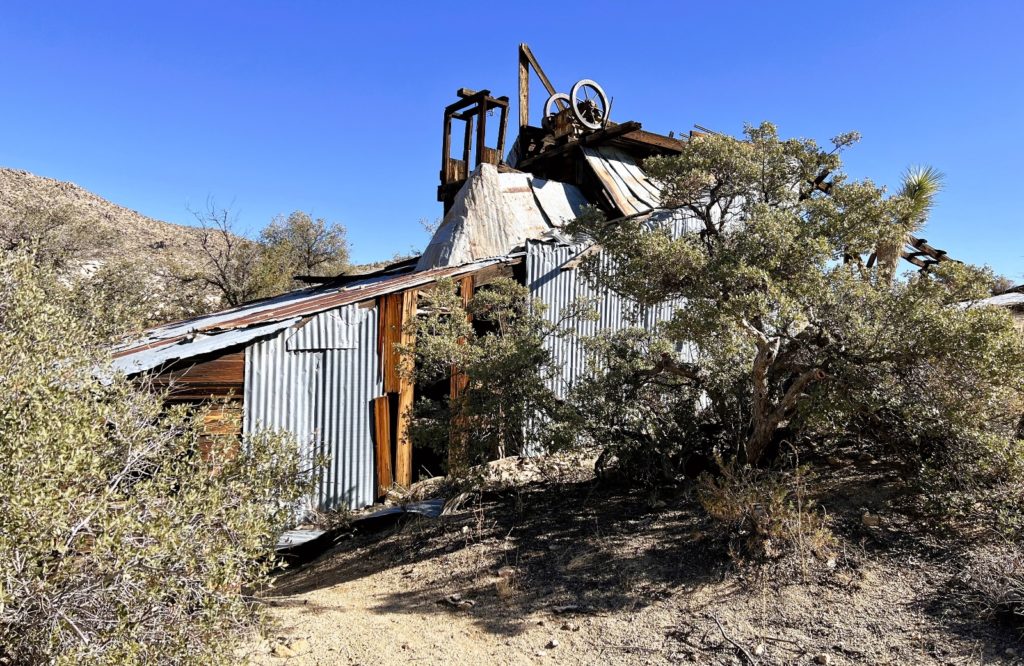
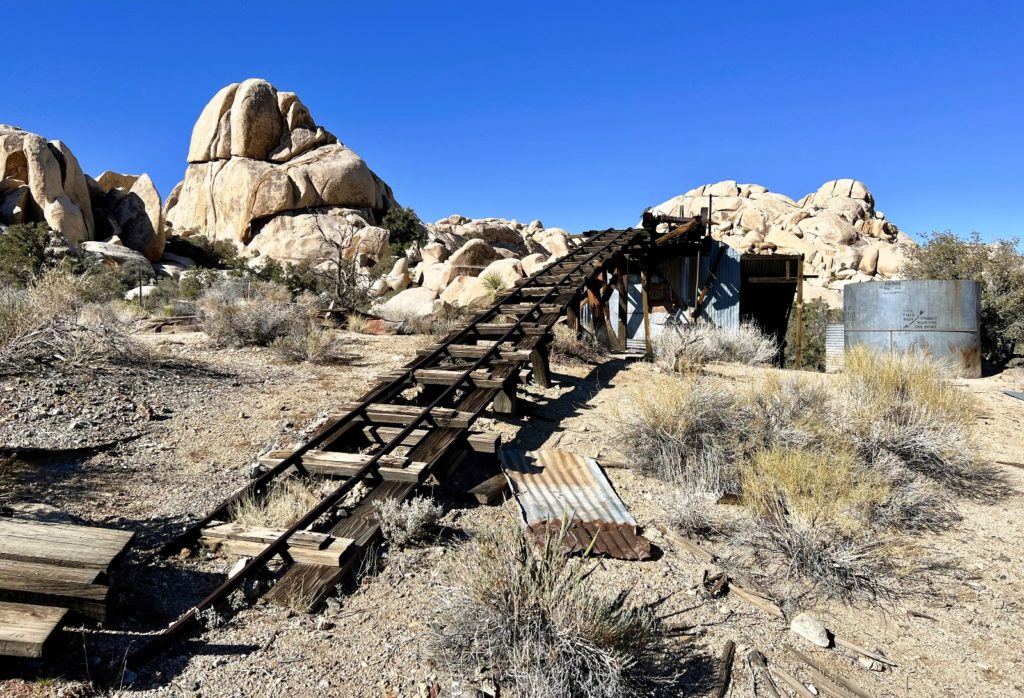
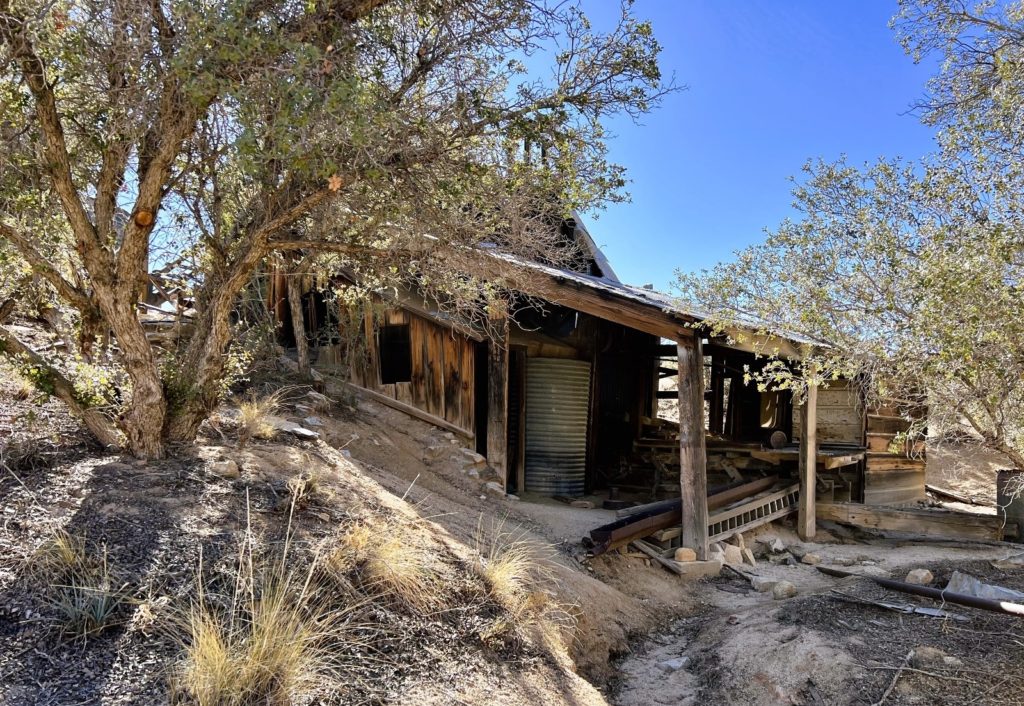
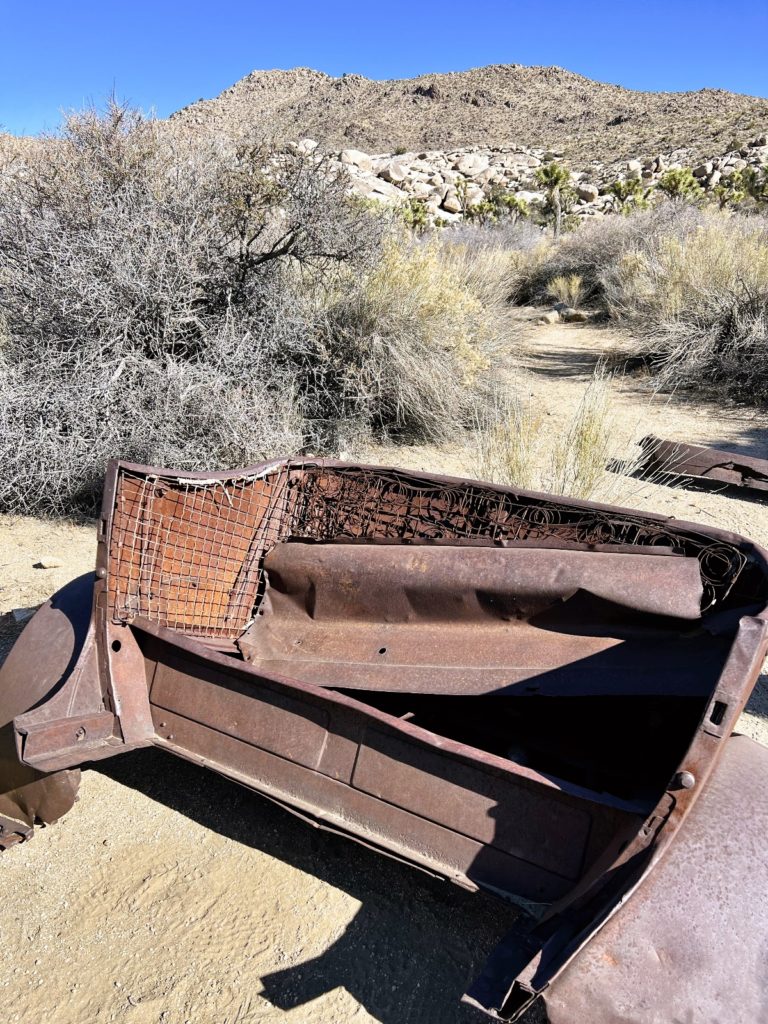
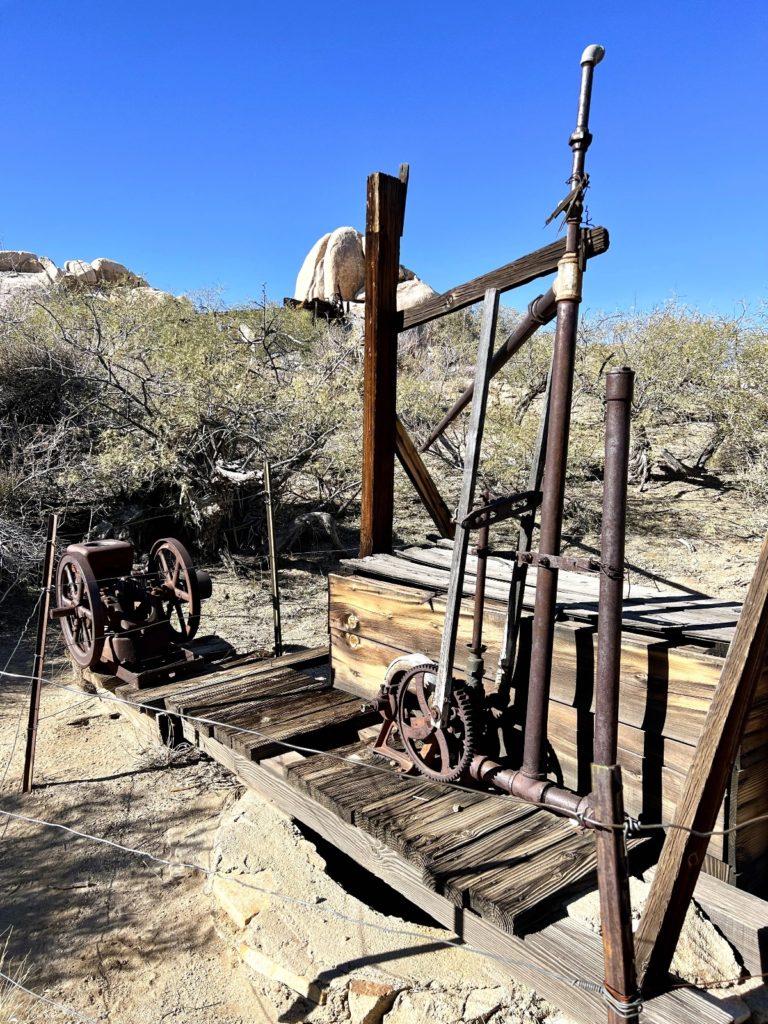
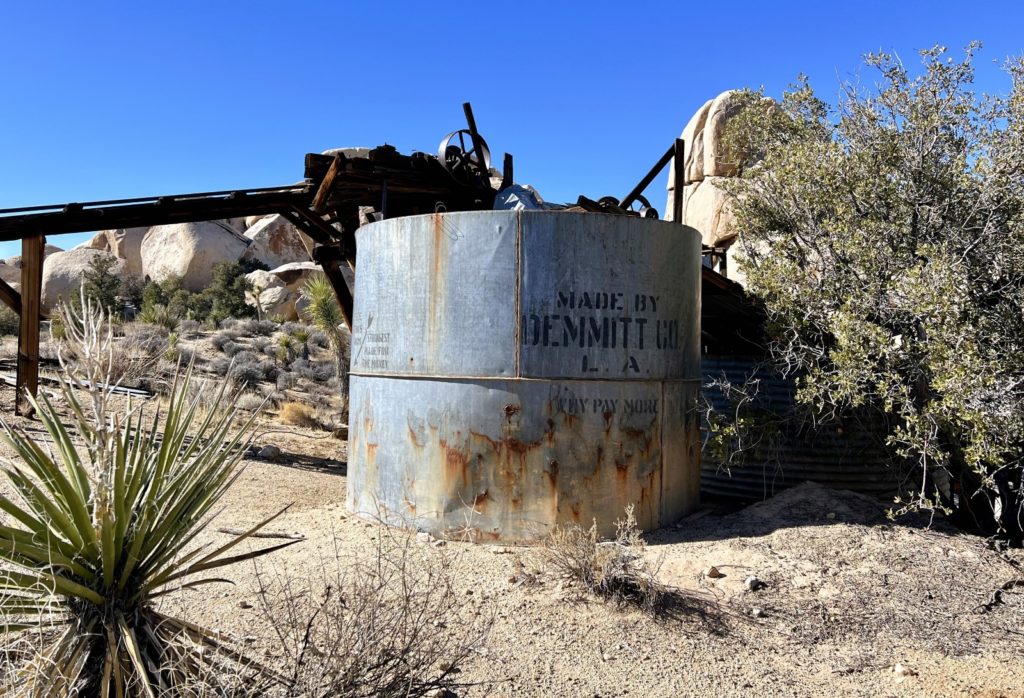
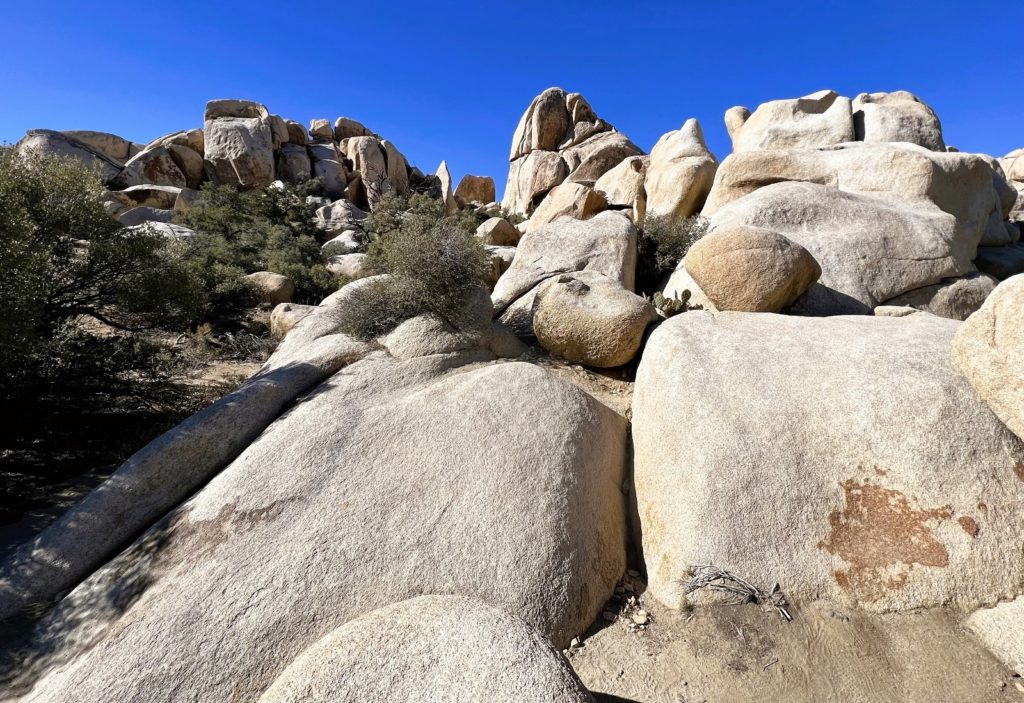
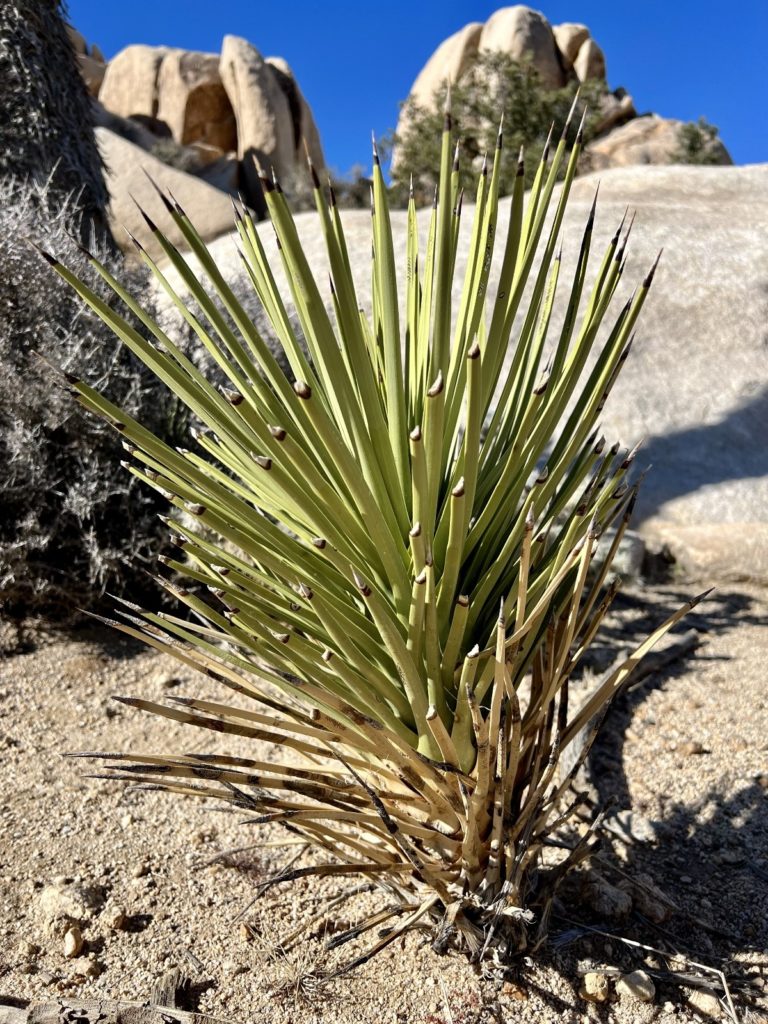
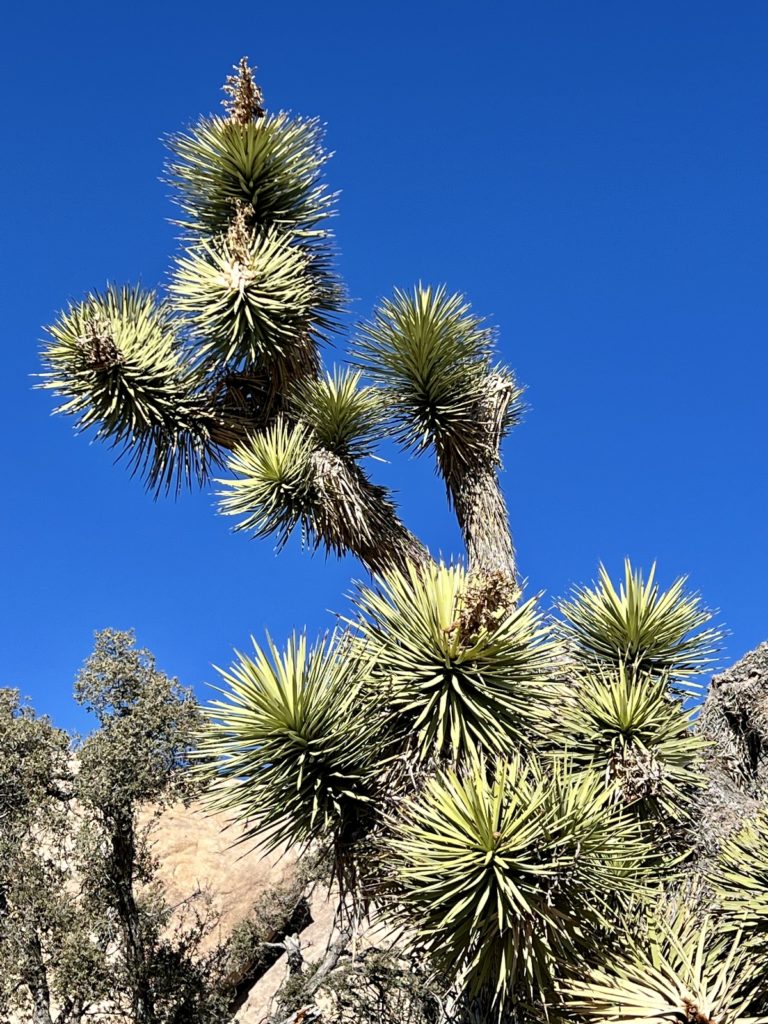
Our route for the day came in at 5.5 miles roundtrip. While I enjoyed our visit to Barker Dam, Wall Street Mill ended up being my favorite of the two destinations and I don’t really understand why it isn’t more popular. The best part of our day was discovering a small archeological site while exploring a boulder area off trail. The area was posted as closed to rock climbing and a little investigation revealed a couple hidden gems.
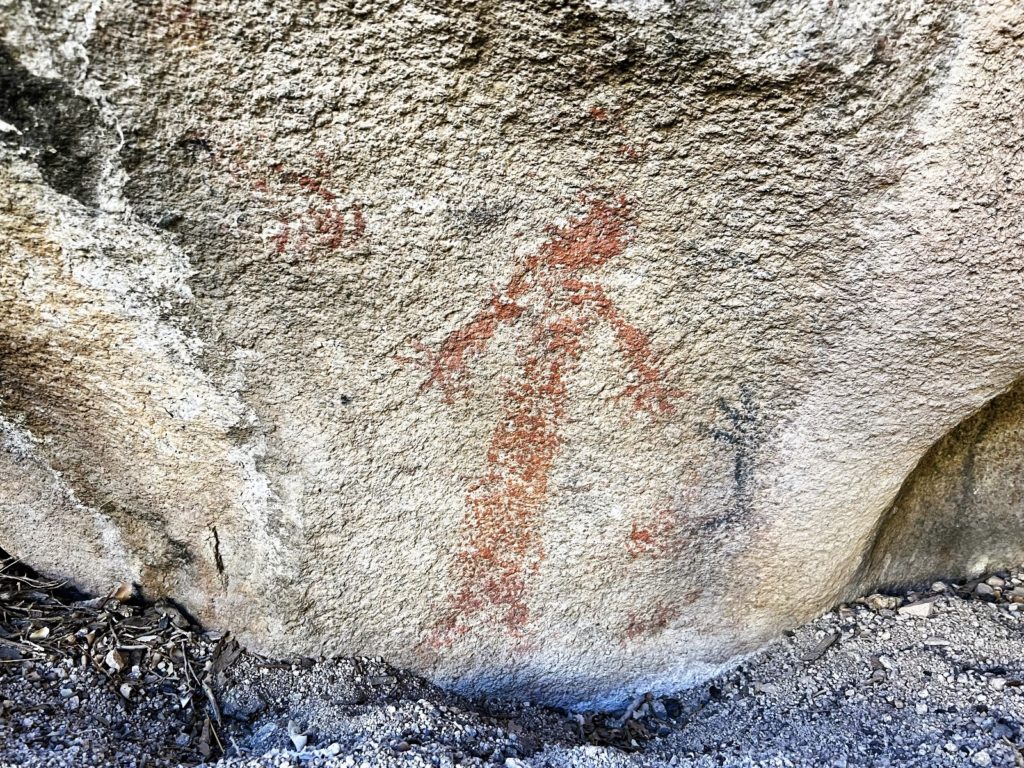
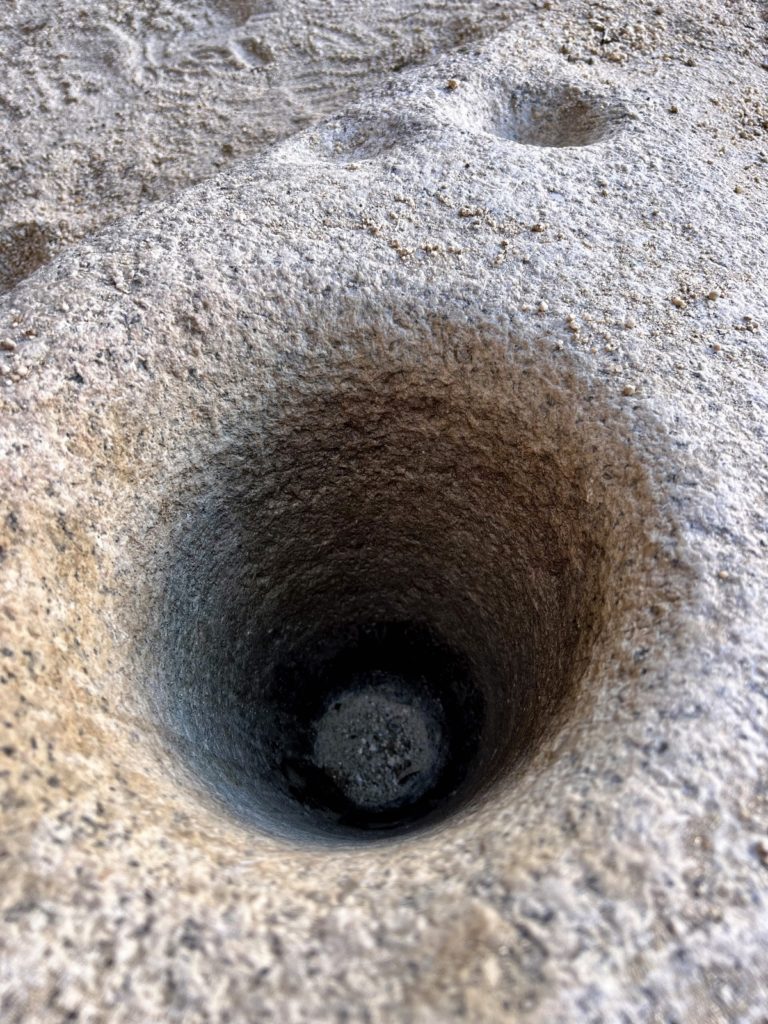
Related Posts
- Our Joshua Tree National Park Adventures Begin
- Joshua Tree National Park: Keys Desert Queen Ranch Tour
- Joshua Tree National Park: Black Rock Canyon-Panorama Loop
- Joshua Tree National Park: Willow Hole
- Joshua Tree National Park: Skull Rock-Split Rock Loop In the Snow!
- So Cal’s Lake Cahuilla and Lost Palm Oasis
- Our Return Trip Home Begins With a Layover at Joshua Tree
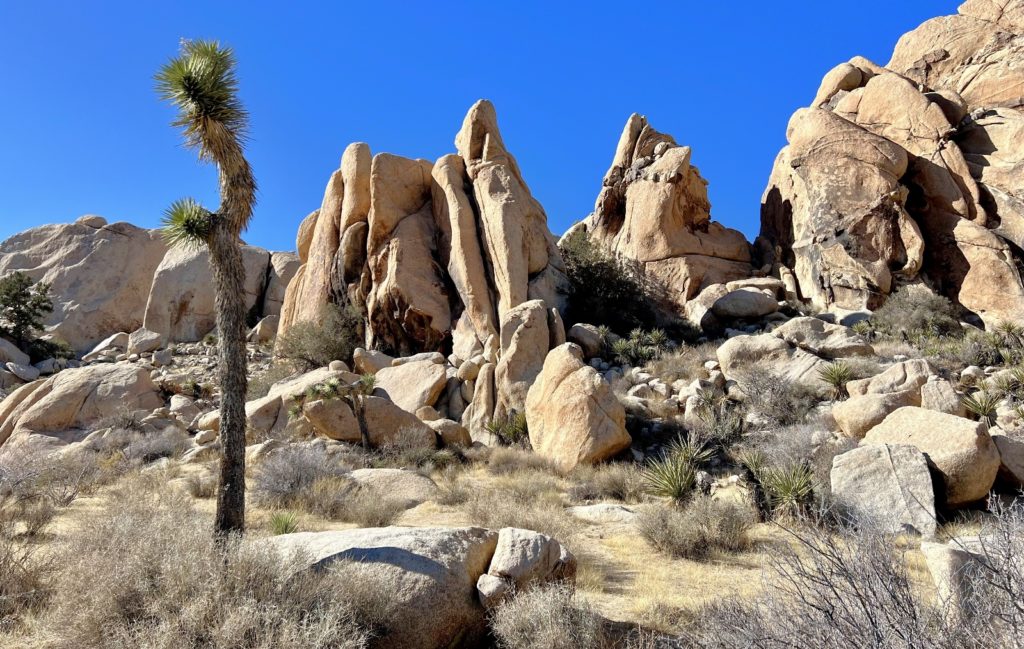
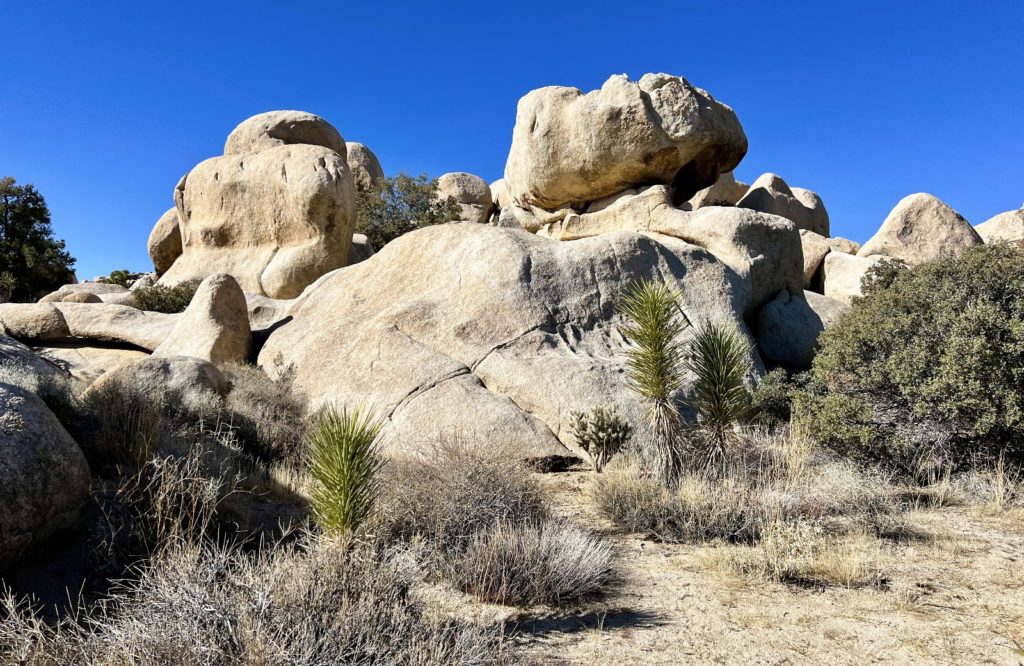
The Adventure Continues
Join us for our next post as we continue our Joshua Tree National Park adventures. And don’t forget to check out our Amazon RV and Adventure Gear recommendations. We only post products that we use and that meet the Evans Outdoor Adventures seal of approval. By accessing Amazon through our links and making any purchase (even things as simple as toothpaste!), you get Amazon’s every day low pricing and they share a little with us. This helps us maintain this website and is much appreciated!
